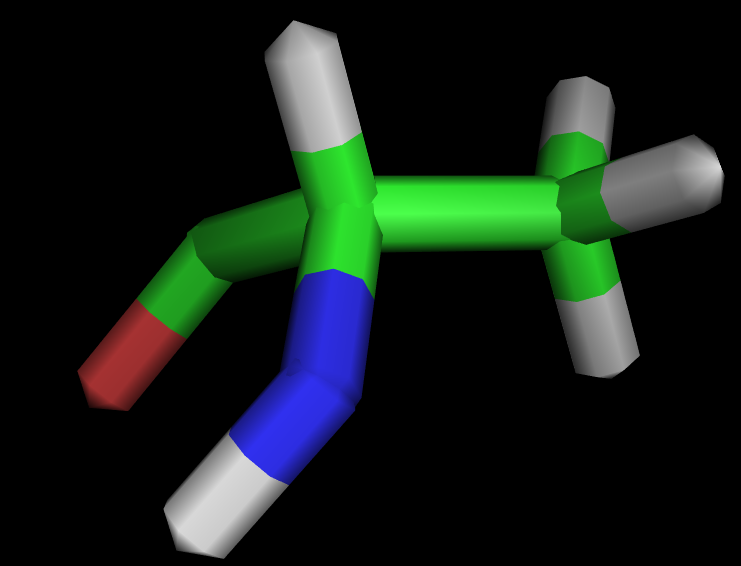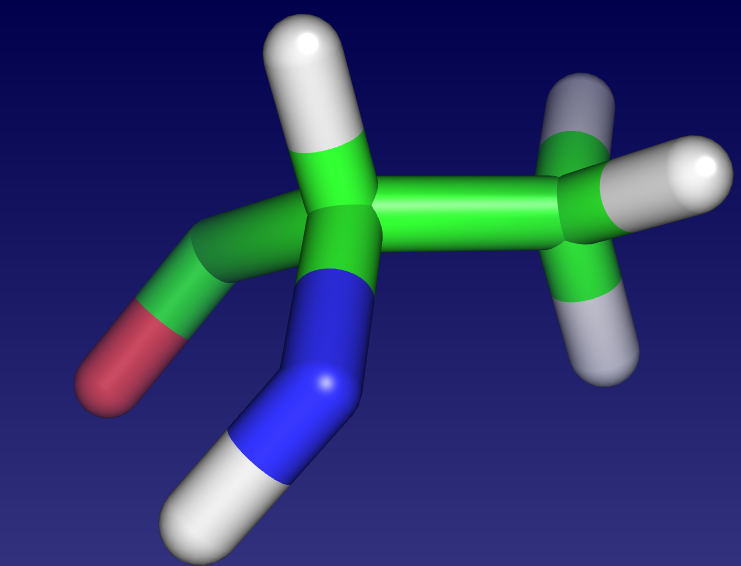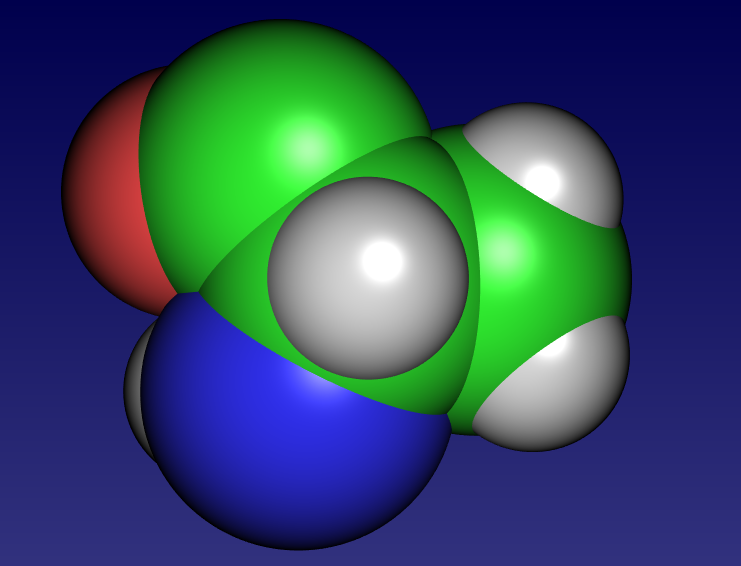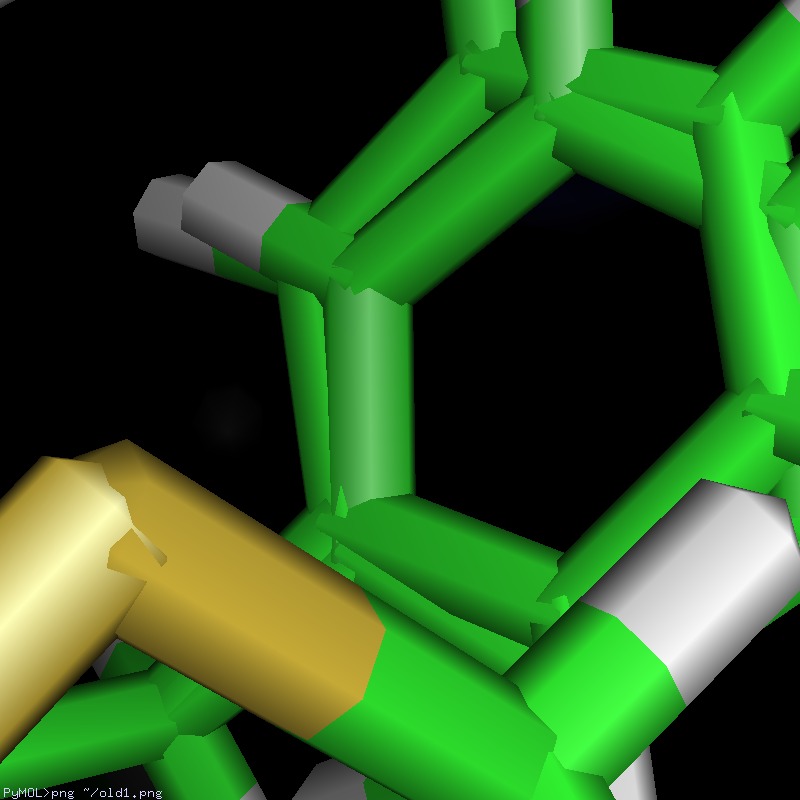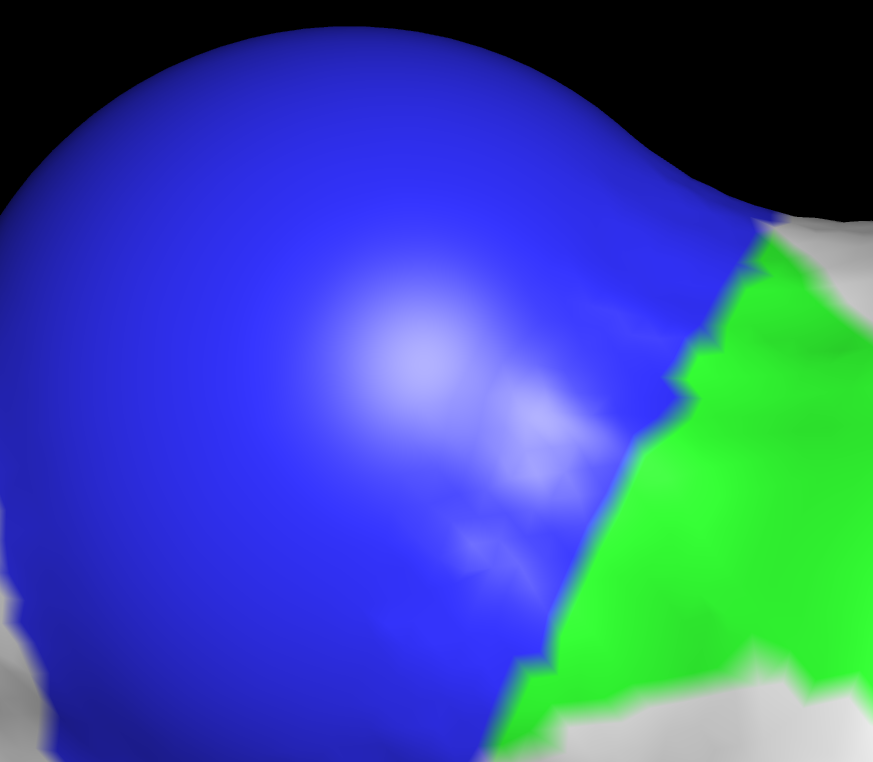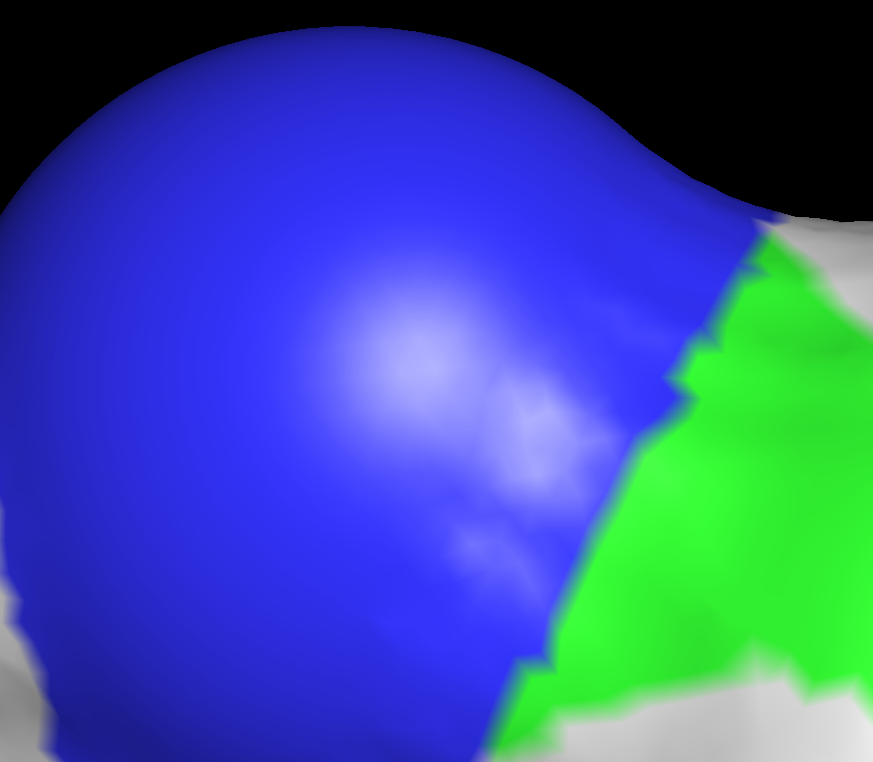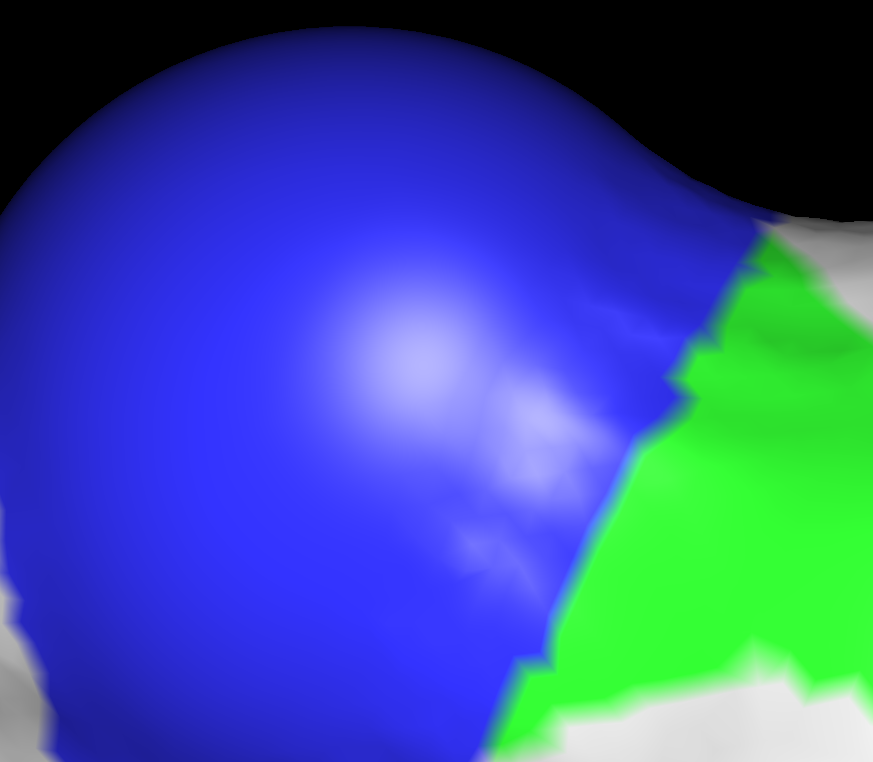Table of Contents
Overview
PyMOL v1.5 supports the OpenGL shading language (GLSL) for drawing molecules. This improves the speed and real-time rendering of data. The speed increases are on the order of 500–1700% (PyMOL v1.5. features page). Quality of those representations is compared here.
Click any image to enlarge
Samples
These images compare the new rendering of sticks and spheres. No image here was ray traced–these are all real-time rendered in PyMOL.
Fine Detail
PyMOL ray tracing is slow, but provides the finest quality images. Achieving that quality in real-time is the goal. Consider the following ray-trace image of the surface of an alanine fragment:
Notice how smooth the lighting is around the specular reflection (white patch on the blue surface). Now compare this to the following standard-level quality from PyMOL:
Notice the blotchy pattern of the white light on the surface of the molecule. Notice the lack of depth around the perimeter of the surface. In order to get real-time rendering, these area of quality had to be degraded–but, not any more. Consider the following snapshot what PyMOL v1.5 rendering produces in real-time:
Shader improvements still need to be made to perfect the PyMOL lighting and sense of depth. More on this, soon.

